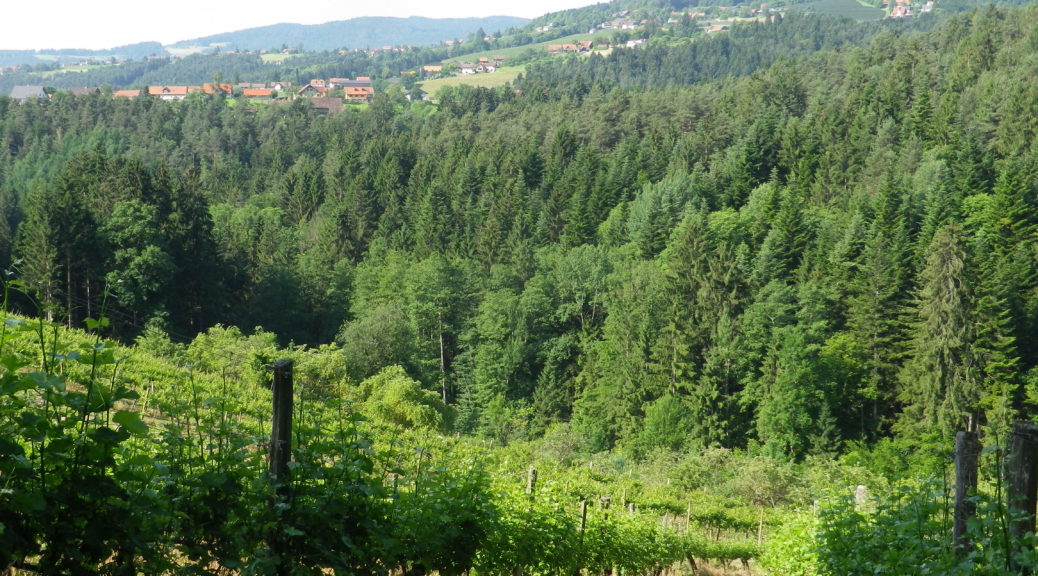From water to wine, and wine-gardens, the literal translation of Weingarten, German for “vineyard.” That was both the theme and the reality of this circuit hike by Sankt Stefan ob Stainz. It was here in Styria, Steiermark, in German, that I began my exploration of the wines from this southeastern corner of Austria.
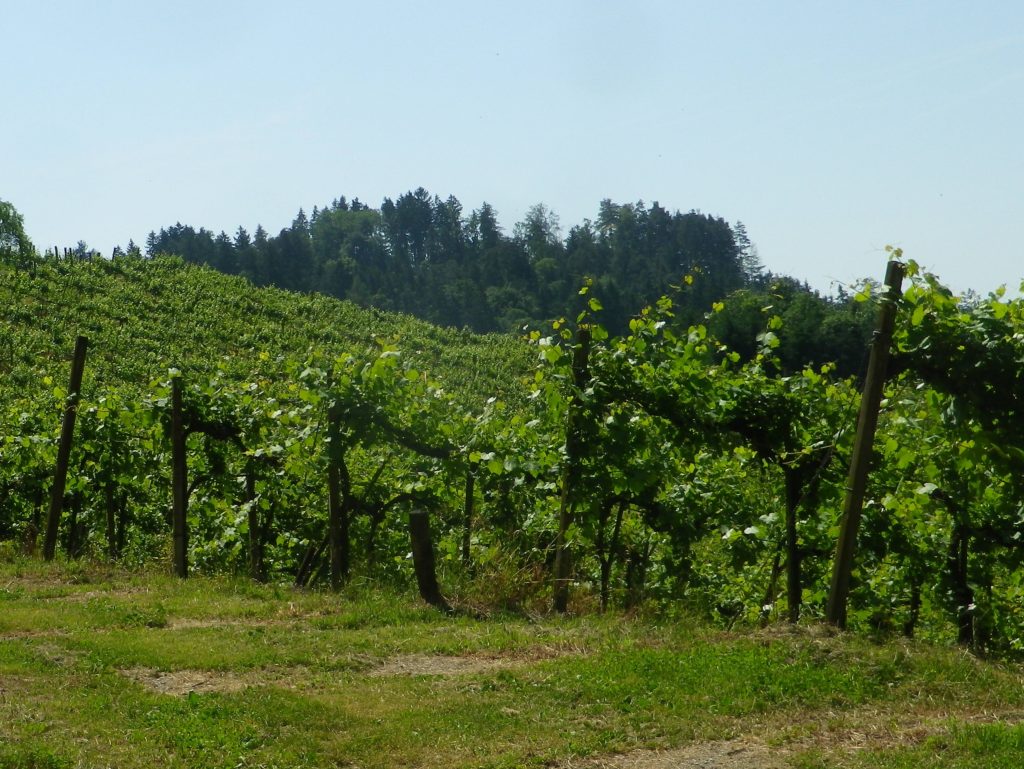
Just a week before the midsummer eve celebration, the sun was seemingly never-ending. Unusually for June though, the temperature was already in the nineties by noon for most of the days that week. Fortunately, the many creeks running through this region, as well as the most popular Steiermark wines (from both red and white varietals), are chilled. Nice hiking conditions and perfect summer wines to enjoy on the eve of the Summer Solstice.
The start of the circuit by the Lemsitz creek, soon led past vineyards, then entered a forest. The dark glen, cooled by the Zach creek waters, provided a welcome respite from the relentless heat and sun that day. Historically, this forest has provided a bounty of resources. Multiple old fish ponds lined the trail, sheltered in cool dark patches. An homage to the many trees which formed part of this forest was on display in the so-called Celtic Tree Circle (Keltische Baumkreis). The flourishing plant life along the trail, from mushrooms to ferns and mosses also played a significant role in earlier times. The trail followed upstream a good quarter hour, crossing, and re-crossing the Zach on pedestrian bridges, then it turned uphill.
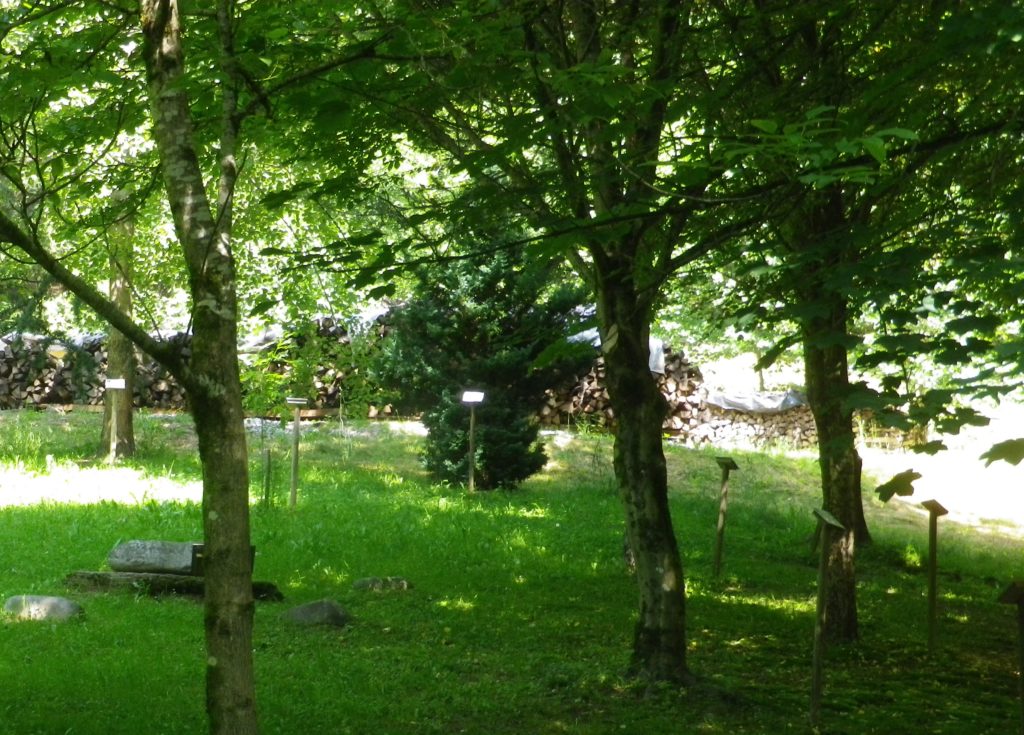
This was the first of a couple of serious inclines. The hills north of Sankt Stefan have the vineyards. These form relatively small pockets of leafy vines on somewhat steep slopes between fields and meadows, bounded by the forests. This area of mixed agriculture, with some animal husbandry (mostly dairy cattle), is characterized by small, family farms. Those families practicing viticulture also operate the Buschenschank, seasonal wine taverns, one of which I found near the crest of this first hill.
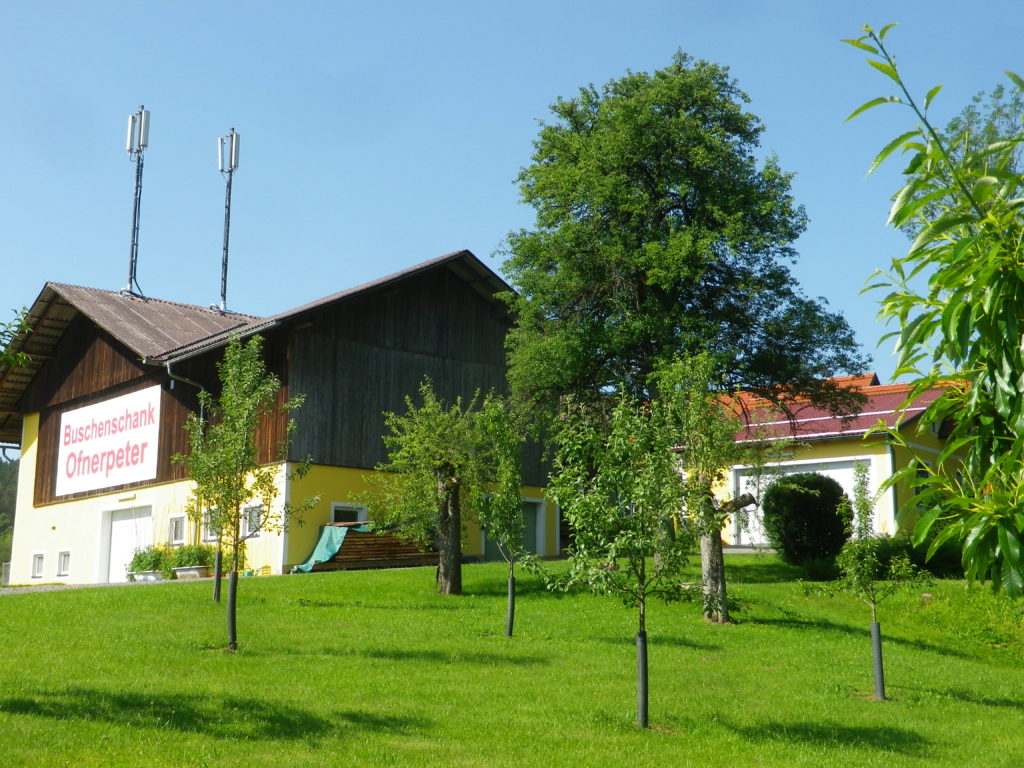
Buschenschank are a wonderful tradition. In theory, you can hike a couple of kilometers, have a glass of wine, then continue on the trail. But in practice, you really have to plan your hike, knowing your route, and timing your arrival. Being run by the families themselves, I am surprised by the generous open hours: almost always open on Fridays, Saturdays and Sundays, sometimes on Thursdays and Wednesdays as well, and for eight to ten hours, from about noon until eight or nine p.m. BUT – they might only be open for say a week in June, then another week in October. The duty, as it were, rotates between family Buschenschank in the local area. Therefore, finding the open one on or near the trail can be a challenge.
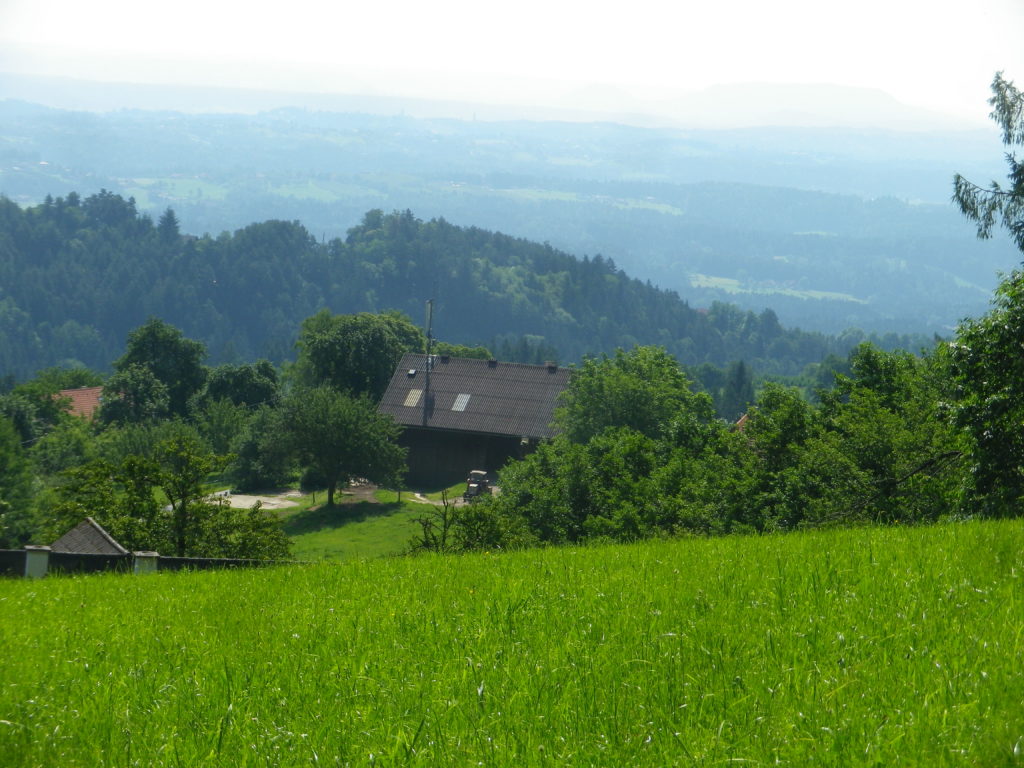
Another challenge can be leaving the Buschenschank after a glass of Sauvignon Blanc, or the rose Schilcher wine, both served chilled in this area, and continuing uphill on a hot sunny day. Luckily, the trail soon left the meadow, and entered the woods again. The remainder of the trail meandered mostly through woods for the rest of the way, passing by or not too far from, pockets of vineyards, following or paralleling streams as they tumbled downhill, to return to where the Zach and the Lemsitz converge by Grubberg.
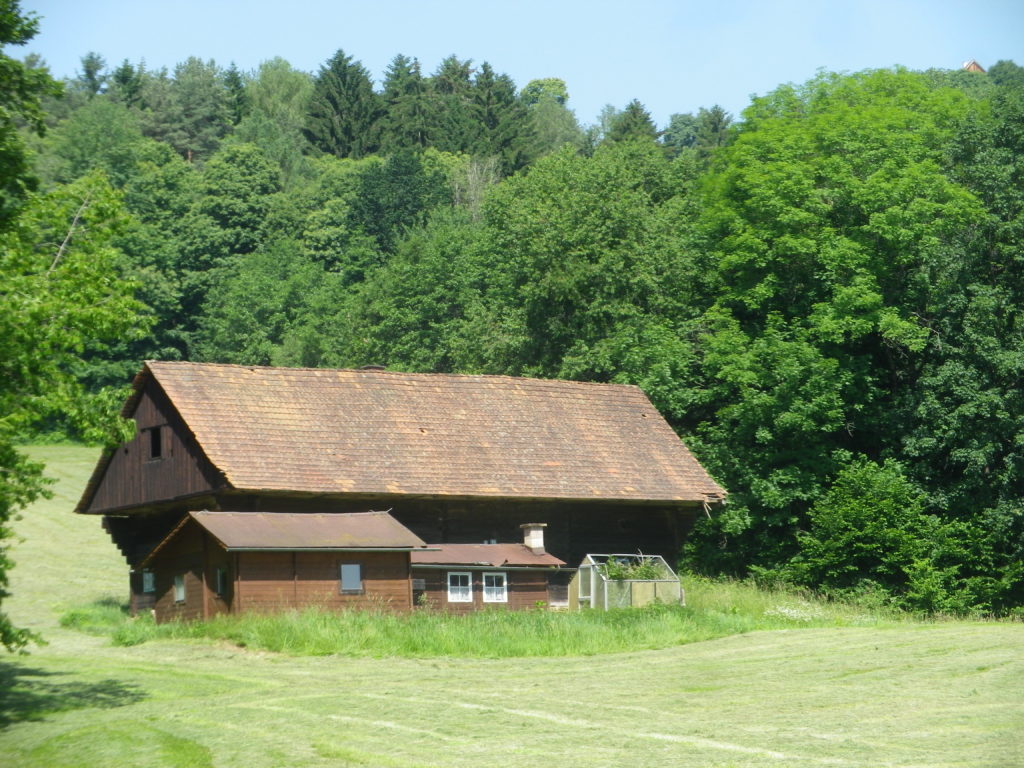
It had rained a couple of days earlier, so the streams were full, and the bottomlands wet, even muddy in places. In these conditions, and being mid-June, vegetation was lush. But the grapes were far from ready, and the hiking season not really yet underway. So, I resolved to return another time for another hike and more wines, hoping I can find an open Buschenschank along a trail!
